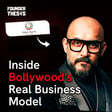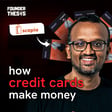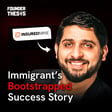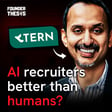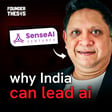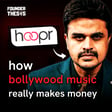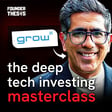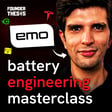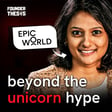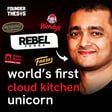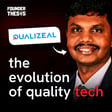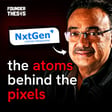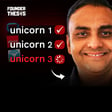
Why Offline Retail (95% of India) is Still Untapped | Anshoo Sharma (Magicpin)
"Offline retail, in spite of being 95% of retail, is dark in terms of data."
This core insight drove Anshoo Sharma to leave his successful venture capital career and build Magicpin. He saw a massive, data-poor market ripe for a technology solution that could bring performance marketing, traditionally used online, to the vast world of offline stores.
Anshoo Sharma is the Co-founder and CEO of Magicpin, India's largest discovery and rewards platform for offline retail. Under his leadership, Magicpin sees over $1 billion spent annually by users on the platform, has raised $37 million in funding, and serves millions of users and retailers. An engineer by training with an MBA from IIM Ahmedabad, Anshoo previously evaluated high-growth startups as a Venture Partner at Lightspeed India and advised major corporations as a Consultant at Bain & Co.
Key Insights from the Conversation:
- The Offline Opportunity: Despite its scale (95% of Indian retail), the offline market lacks data, hindering effective marketing and growth for retailers.
- Performance Marketing for Offline: Magicpin applies data-driven marketing principles, allowing offline retailers to see tangible ROI, much like online ad platforms.
- VC Lessons: Anshoo shares insights from his time as a VC, including evaluating strategic value vs. short-term metrics and the importance of backing the right team.
- Innovating for Kiranas: Recognizing the unique challenges of small retailers, Magicpin developed tools tailored to their needs, like simplified ordering systems beyond basic catalogues.
- Pandemic Pivot: Covid-19 accelerated the need for offline businesses to go online, leading Magicpin to build free tools enabling retailers to accept online orders and manage delivery.
- Future of Retail: The rise of D2C brands and the increasing importance of omnichannel presence create new opportunities for platforms that can enable small retailers.
Chapters:
- 0:00:27 - Intro: Anshoo Sharma's Journey & Offline Thesis
- 0:01:27 - Early Career: Building VoIP Technology
- 0:05:05 - Pivot to Business: IIM-A Insights & Bain Consulting
- 0:12:10 - Entering Venture Capital with Lightspeed India
- 0:14:43 - VC Learnings: Investing, Thesis Building & Missed Deals
- 0:34:39 - The Leap to Entrepreneurship: Why Start Magicpin?
- 0:37:20 - The Magicpin Idea: Solving the Offline Data Problem
- 0:41:41 - Zero to One: Early MVPs, WhatsApp Hacks & Iteration
- 0:45:53 - Scaling Magicpin: Funding ($37M) & Growth Strategy
- 0:50:18 - Innovation Spree: Building Online Tools for Offline Retailers
- 1:01:11 - Post-Pandemic Retail: Enabling Kiranas & D2C Opportunity
- 1:07:17 - Closing Thoughts: Building for the Future of Indian Retail
Hashtags:
#Magicpin #AnshooSharma #OfflineRetail #IndianStartups #FounderThesis #VentureCapital #StartupIndia #PerformanceMarketing #RetailTech #KiranaTech #EcommerceIndia #D2CIndia #Entrepreneurship #Podcast #StartupPodcast #IIMAhmedabad #Bain #LightspeedVP #StartupJourney #BuildingInIndia
